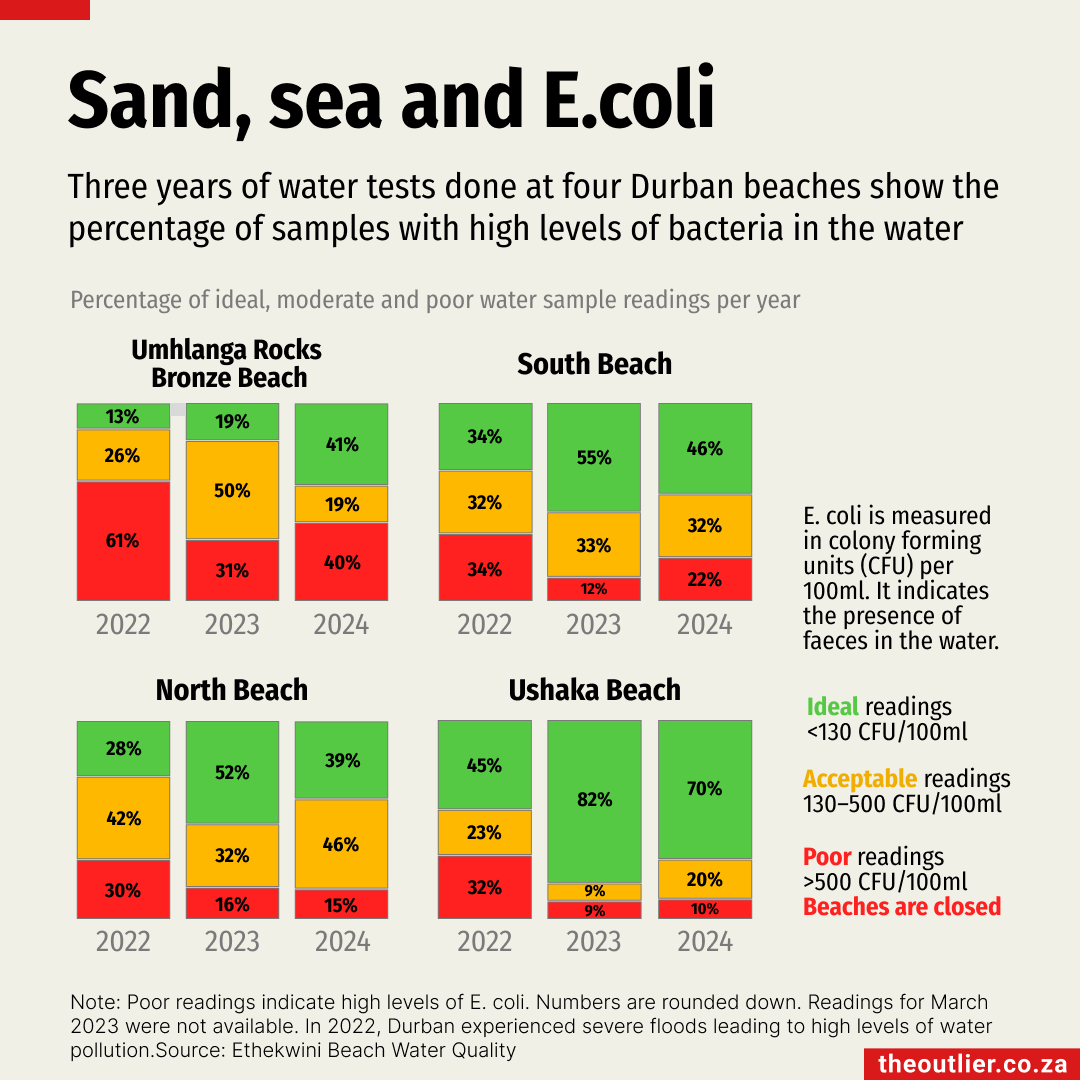
Durban’s warm Indian Ocean beaches have long attracted South African holidaymakers, but, since severe floods in 2022 damaged sewerage and water treatment infrastructure, the city has struggled with water quality problems. High levels of E.coli bacteria in the water are an indicator of faecal contamination which the city uses to close beaches for swimming.
The Outlier has collected beach water quality readings via public access to information requests and notices posted online by the city between January 2022 and December 2024. The percentage of readings per year that show E. coli at levels high enough to close beaches was lower in 2024 than it was in 2022. But still, less than half of the samples taken from three of Durban’s most popular beaches, see chart above, had readings in the ‘ideal for swimming range’ in 2024. Forty percent of the samples taken at Umhlanga Rocks Bronze Beach in 2024 were poor. Flooding and river contamination were key factors
E. coli is measured in colony-forming units (CFUs) per 100ml, which is an indication of the number of live microorganisms in a 100ml sample. E. coli readings below 130 CFU/100ml are considered ideal for swimming. Results between 130 and 500 CFU/100ml are considered acceptable. If they are over 500 CFU/100ml, they are considered poor, and the beach is closed
Get the data used in this chart on DataDesk
The Outlier has collected beach water quality readings via public access to information requests and notices posted online by the city between January 2022 and December 2024. The percentage of readings per year that show E. coli at levels high enough to close beaches was lower in 2024 than it was in 2022. But still, less than half of the samples taken from three of Durban’s most popular beaches, see chart above, had readings in the ‘ideal for swimming range’ in 2024. Forty percent of the samples taken at Umhlanga Rocks Bronze Beach in 2024 were poor. Flooding and river contamination were key factors
E. coli is measured in colony-forming units (CFUs) per 100ml, which is an indication of the number of live microorganisms in a 100ml sample. E. coli readings below 130 CFU/100ml are considered ideal for swimming. Results between 130 and 500 CFU/100ml are considered acceptable. If they are over 500 CFU/100ml, they are considered poor, and the beach is closed
Get the data used in this chart on DataDesk
